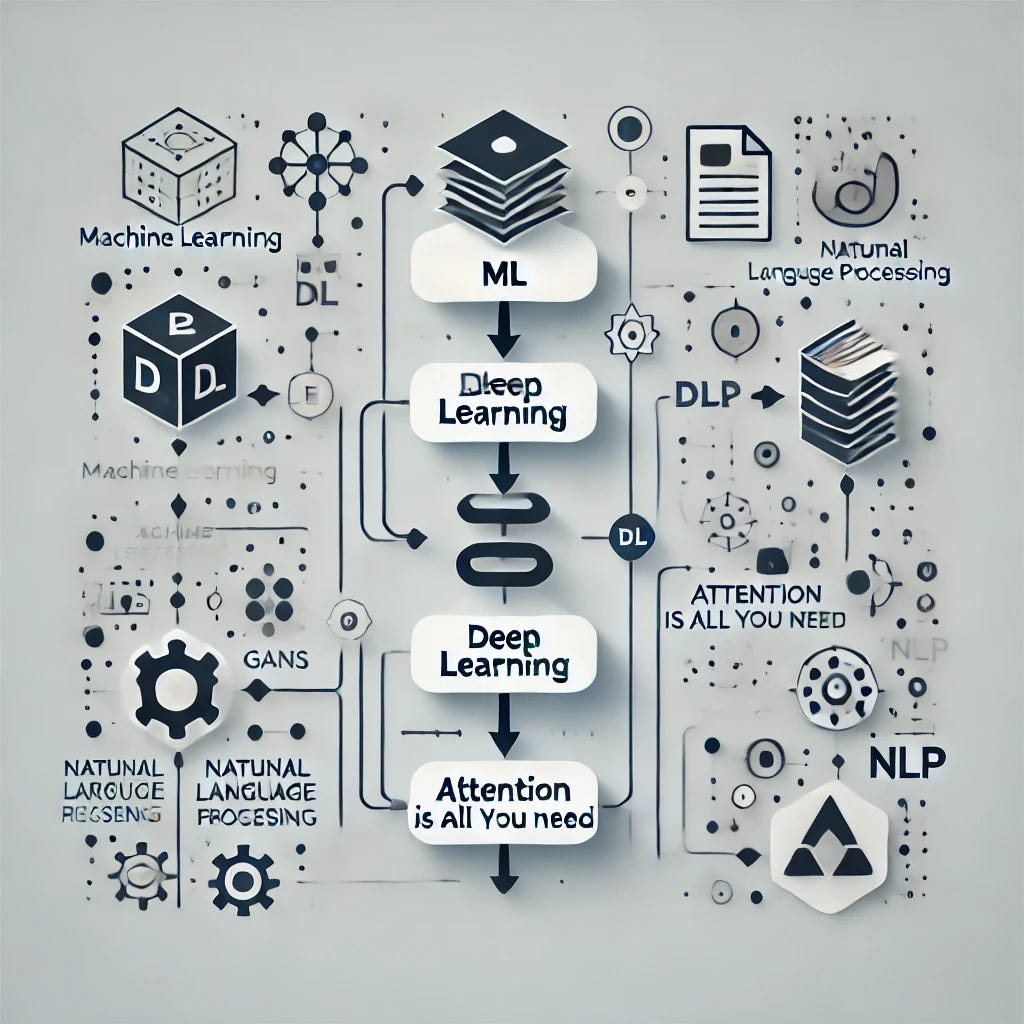Learning Deep Learning Through Implementation: A Practical Guide
Deep learning can seem overwhelming, but there's a powerful way to master it: implementing papers from scratch. Here's a structured approach to building your expertise from the ground up.
This post provides a progressive roadmap of papers and concepts you can implement, categorized into Machine Learning (ML), Deep Learning (DL), and Natural Language Processing (NLP). Each section is ordered by difficulty to help you build a strong foundation before tackling advanced topics.
Essential Papers to Implement
Machine Learning
Beginner
A Few Useful Things to Know About Machine Learning by Pedro Domingos (2012)
Highlights common pitfalls and heuristics in ML. Demonstrate concepts like bias-variance tradeoffs and overfitting.
A k-means Clustering Algorithm (Hartigan & Wong)
A simple yet powerful clustering algorithm.
Random Forests (Breiman, 2001)
Introduces Random Forests, a cornerstone ML algorithm. Build Random Forests from scratch and compare them with Scikit-learn.
Support Vector Machines (Cortes & Vapnik, 1995)
Introduces SVM and optimisation techniques.
Intermediate
XGBoost: A Scalable Tree Boosting System (Chen & Guestrin, 2016)
Introduces a powerful and robust tree-based learning algorithm. Leverage the power of parallel computing.
Latent Dirichlet Allocation (Blei et al., 2003)
It helps you understand probabilistic topic modelling and Bayesian inference in a practical context.
Stochastic Gradient Descent (SGD) Tricks by Léon Bottou (2012)
Explains optimization techniques crucial for ML practitioners.
Advanced
The Nature of Statistical Learning Theory (Vapnik, 1995)
This implementation teaches you the mathematical foundations that underpin modern machine learning algorithms.
Deep Learning
Beginner
Gradient Descent with Momentum
Building this optimizer from scratch reveals how momentum helps overcome local minima and speeds up convergence.
Dropout: A Simple Way to Prevent Neural Networks from Overfitting (Srivastava et al., 2014)
Implementing dropout teaches you one of the most effective and widely used regularization techniques in deep learning.
ReLU Deep Neural Networks (Glorot et al., 2011)
This implementation demonstrates why ReLU solved the vanishing gradient problem and revolutionized deep learning.
Convolutional Neural Networks (LeNet) by Yann LeCun et al. (1998)
Introduces CNNs, foundational in DL. Train LeNet on the MNIST dataset.
Intermediate
Batch Normalization (Ioffe & Szegedy, 2015)
Building BatchNorm shows how normalizing layer inputs dramatically improves training stability and speed.
Adam: A Method for Stochastic Optimization (Kingma & Ba, 2014)
Implementing Adam helps you understand why it became the go-to optimizer by combining momentum and adaptive learning rates.
U-Net: Convolutional Networks for Biomedical Image Segmentation (Ronneberger et al., 2015)
This architecture shows how the skip-connections and symmetric architecture enable precise image segmentation. Focused on image segmentation tasks.
Advanced
Deep Residual Learning for Image Recognition (He et al., 2015)
Implementing ResNet reveals how residual connections solve the degradation problem in very deep networks.
Generative Adversarial Nets (Goodfellow et al., 2014)
Introduces GANs for generating synthetic data. Building GANs teaches you about adversarial training and the challenges of generating realistic data.
DeepMind’s AlphaGo by Silver et al. (2016)
Combines reinforcement learning with neural networks.
Natural Language Processing
Foundation
Understanding LSTM
Simplifies the concepts behind LSTMs. Try to build an LSTM for text generation.
Efficient Estimation of Word Representations in Vector Space (Word2Vec, Mikolov et al., 2013)
This implementation shows how neural networks can learn meaningful word representations from raw text.
Neural Machine Translation by Jointly Learning to Align and Translate (Bahdanau et al., 2014)
Introduces attention mechanisms. Building this teaches you the foundations of attention mechanisms in sequence-to-sequence models.
Sequence to Sequence Learning with Neural Networks (Sutskever et al., 2014)
This implementation reveals how encoder-decoder architectures handle variable-length input/output sequences.
Advanced
Attention Is All You Need (Transformer architecture, Vaswani et al., 2017
Introduces the transformer architecture. Building transformers from scratch shows why self-attention revolutionized NLP and became the foundation for modern language models.
Language Models are Few-Shot Learners (GPT-3, Brown et al., 2020)
This implementation teaches you about scaling language models and few-shot learning (though practically, you'd implement a smaller version).
High-Resolution Image Synthesis with Latent Diffusion Models (Stable Diffusion, 2022)
Building this shows you how latent diffusion models enable efficient high-quality image generation.
How to Approach This Roadmap
Start Small: Begin with simpler algorithms and tasks to build confidence.
Break it Down: Divide complex papers (e.g., transformers) into modules and implement them step-by-step.
Leverage Resources: Use blog posts, tutorials, and open-source implementations to complement your learning.
Document Your Work: Write about your implementation journey to solidify learning and showcase your work.
Tips for Success
Break Down Papers: Start with the abstract and conclusion to understand the goal before diving into the methods.
Use Open Resources: Explore repositories like Papers with Code to find implementations.
Iterate: Build foundational components first (e.g., attention mechanisms) before tackling the entire architecture.
Implementing these papers will improve your coding skills and deepen your understanding of how ML and DL models work.
Happy coding!


